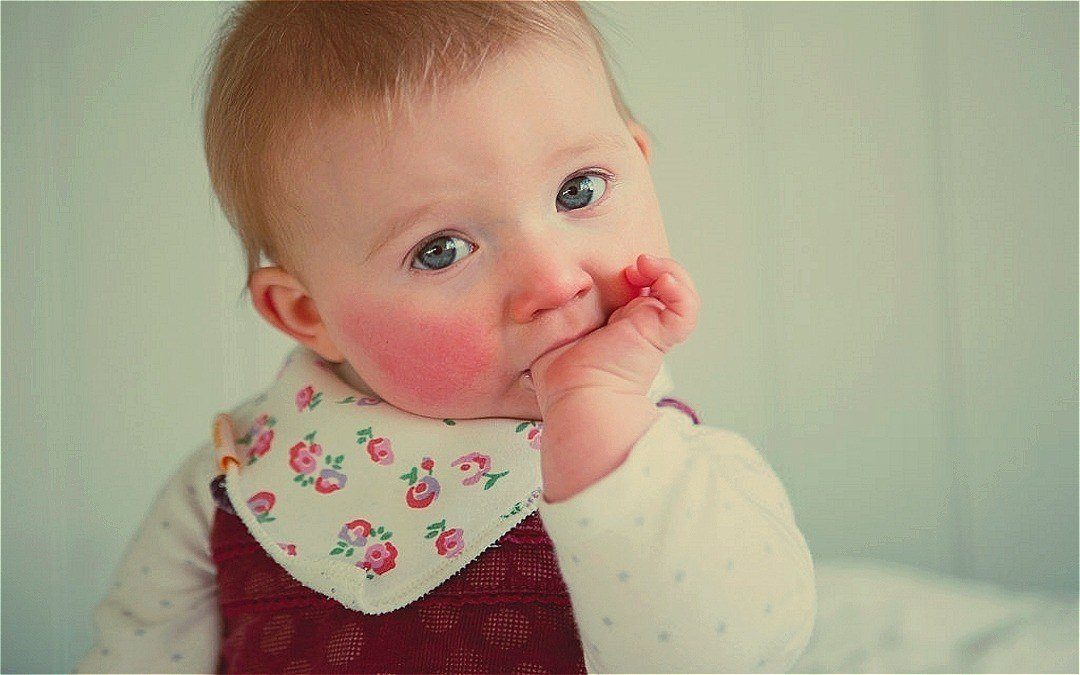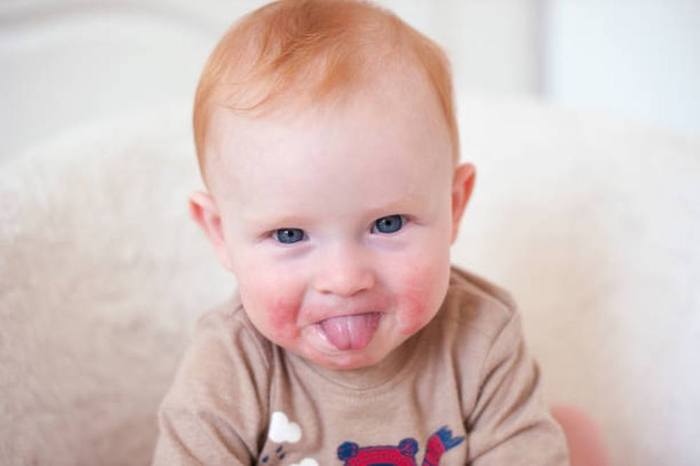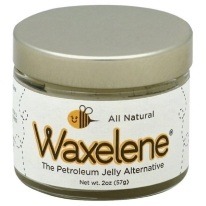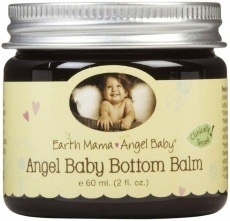Can Teething Cause Rash?

Article at a Glance:
- A facial rash is a common teething symptom.
- Saliva can irritate a baby’s sensitive skin, resulting in a rash around the mouth, chin, lips, neck, and chest.
- A diaper rash is NOT a teething symptom.
The crying, the screaming, the pain… not only do teething babies have achy gums and want to gnaw on everything, but they also may be plagued with a host of other unpleasant side effects. With the pools of drool, you might also begin to witness red swelling appear around your child’s mouth.
You might be wondering whether it’s normal for teething to cause a rash. Although there is little evidence of what may cause a teething rash, this is a common symptom to appear when a baby starts teething.
A teething rash can appear on your little one’s mouth, chin, lips and even all the way down to his neck and chest. If children typically touch their mouth with arms or hands, it is possible that a rash may appear on those parts of their body. Keep in mind that a diaper rash is NOT a symptom of teething.
What Causes A Teething Rash?
There is little scientific evidence of what exactly causes a teething rash in teething children. There is speculation from a variety of sources (parenting websites, parent testimonies, etc.) that hypothesize the digestive enzymes in saliva cause teething rashes.
Scientific terminology for teething rashes around the mouth include oral, perioral, or circumoral – rash, exanthem (ex-an-thum), or dermatitis.
Excessive salivation, or sialorrhea (sigh-lor-ee-uh), occurs more frequently around primary tooth eruption. This excess can cause your teething child to gag or cough, and may result in a rash around the mouth [1]. A facial rash is typically considered pathognomic, or an indication of teething [2].
Facial rashes have also been attributed to a Human Herpes Virus 6 (HHV-6) agent, which is common in children around their teething age [3]. Although a common infection, it is important to rule out whether a rash is symptomatic of teething or a more serious illness.
Correctly Identifying A Teething Rash
Should I be concerned?
A rash can be a bit nerve-wracking for a new parent, especially if they are not familiar with the different types of rashes and skin conditions babies can have.
This is especially true if your infant has just started teething.
As with all signs and symptoms of teething, it’s important to correctly identify a rash and treat it as a separate symptom from teething before assuming it is related to teething.
Most parents overlook unrelated symptoms based on their own beliefs of baby teething symptoms. Personal beliefs without being properly informed has led to misdiagnosis and increased risk for illness [2].

What Does A Teething Rash Look Like?
An outbreak will look like small red bumps with raised patches of skin around the mouth, lips, chin, neck, and chest.
The rash will appear right around the same time as other signs and symptoms of teething. If the rash appears around the mouth and neck area and you can see or feel that your child’s gums are swollen, chances are you are dealing with a teething rash.
Other symptoms that may accompany a teething rash include irritability, fussiness, chewing and gnawing on objects, and/or appearance of teeth erupting through the gums.
When Should I Be Concerned?
Never dismiss any irregular behaviors that your child exhibits. If your child’s rash is accompanied by fever, vomiting, or diarrhea, make sure to contact your pediatric doctor. Other symptoms to be concerned for:
- Full-body blisters
- Severely cracked skin
- Oozing blood or puss
- Lethargy
- Swollen lymph nodes
Can Teething Cause Diaper Rash?
A diaper rash is also known as a nappy rash.
A teething diaper rash is not common and should not be treated as a symptom of teething; just as vomiting, diarrhea, and fever are not teething symptoms.
Diaper rashes are a common occurrence in babies and can be avoided by preventing skin irritation and frequently changing your baby’s diaper.
Common treatments for diaper rash include air exposure, extra bathing in warm water, and application of topical barriers, such as petroleum jelly and zinc oxide.
Remedies For Teething Rashes
The best preventative method from teething rashes is hygiene – making sure that saliva doesn’t linger around the mouth. Keeping excess saliva from resting around the mouth by simply wiping your child’s mouth is recommended by majority of professionals [4]. The following recommendations have been shared by parents who have opted for natural alternatives in healing teething rashes.
Keep a Bib On
Not letting drool dry on baby’s skin can help prevent a rash from occurring. A teething rash is more likely to develop when saliva dries on their skin and irritates it. The best way to avoid a teething rash is to keep a bib on them and have a towel readily available for wiping.
Lanolin
Lanolin cream is made from the wax in a sheep’s wool – it provides barrier protection between your baby’s saliva and skin.
Lanolin is safe to use on nipples while breastfeeding, so there is no limit to its use on your baby’s face, neck and chest. Placing a barrier between your baby’s skin and their saliva is a great way to prevent baby teething rash.
Remember to clean and dry your baby’s face of saliva residue before application of this topical cream.

Waxelene
Waxelene is not only good for a teething rash, but it also helps with diaper rashes, dry skin, and too much sun.
Considered a petroleum jelly alternative, it is made from beeswax and natural plant-based oils. It is one of those great products that you will initially buy for your baby but end up using for yourself and your entire family.

Angel Baby Bottom Balm
Another great product for a teething rash is marketed as an herbal diaper rash cream, but it is safe and effective when used on a teething rash and can help prevent infection.
This balm uses a blend of shea butter and essential oils, combined with antifungal and antibacterial organic herbs. It works on teething rashes, scrapes, chicken pox, bug bites, and minor burns.

Oatmeal Bath
Helpful for any rash or skin condition, adding a couple of scoops of colloidal oatmeal to your baby’s bath will help soothe redness, itching, and inflammation.
Tip: colloidal oatmeal is just old-fashioned rolled oats (not steel cut) that have been ground to a fine powder. You can make it at home in your blender or food processor to save money and skip the added ingredients found in many store-bought products.
Remember That Teething Rashes Are Temporary
While a teething rash is no fun for your baby, it is temporary and will clear up when the drooling subsides, which is based on how long teething will last per tooth for your toddler.
As long as you are diligent in wiping up saliva and applying barrier protection, you should see improvement in your child’s teething rash.
If you have any doubt that the rash is something more serious, it is better to err on the side of caution and make an appointment with your pediatrician or dermatologist.
References:
[1] Memarpour et al. Signs and symptoms associated with primary tooth eruption: A clinical trial of nonpharmacological remedies.
[2] Bhavneet, K. Awareness of Parents Towards Teething.
[3] McIntyre & McIntyre. Teething Troubles.
[4] Lyttle et al. Tooth Eruption and Teething in Children.